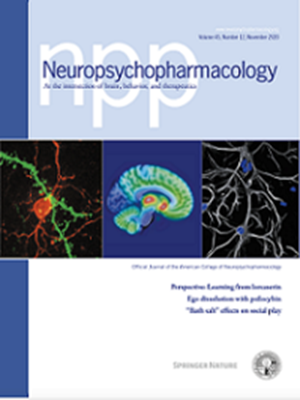Validation of L-type calcium channel blocker amlodipine as a novel ADHD treatment through cross-species analysis, drug-target Mendelian randomization, and clinical evidence from medical records
IF 6.6
1区 医学
Q1 NEUROSCIENCES
引用次数: 0
Abstract
ADHD is a chronic neurodevelopmental disorder that significantly affects life outcomes, and current treatments often have adverse side effects, high abuse potential, and a 25% non-response rate, highlighting the need for new therapeutics. This study investigates amlodipine, an L-type calcium channel blocker, as a potential foundation for developing a novel ADHD treatment by integrating findings from animal models and human genetic data. Amlodipine reduced hyperactivity in SHR rats and decreased both hyperactivity and impulsivity in adgrl3.1−/− zebrafish. It also crosses the blood-brain barrier, reducing telencephalic activation. Crucially, Mendelian Randomization analysis linked ADHD to genetic variations in L-type calcium channel subunits (α1-C; CACNA1C, β1; CACNB1, α2δ3; CACNA2D3) targeted by amlodipine, while polygenic risk score analysis showed symptom mitigation in individuals with high ADHD genetic liability. With its well-tolerated profile and efficacy across species, supported by genetic evidence, amlodipine shows potential to be refined and developed into a novel treatment for ADHD.

通过跨物种分析、药物靶点孟德尔随机化和医疗记录临床证据验证l型钙通道阻滞剂氨氯地平作为一种新的ADHD治疗方法。
ADHD是一种慢性神经发育障碍,严重影响生活结果,目前的治疗方法通常有不良副作用、高滥用潜力和25%的无反应率,这突出了对新治疗方法的需求。本研究通过整合动物模型和人类基因数据的发现,研究l型钙通道阻滞剂氨氯地平作为开发新型ADHD治疗的潜在基础。氨氯地平降低SHR大鼠的多动症,降低adgrl3.1-/-斑马鱼的多动症和冲动性。它也穿过血脑屏障,减少端脑的激活。至关重要的是,孟德尔随机化分析将ADHD与l型钙通道亚基(α1-C;CACNA1C,β1;CACNB1,α2δ3;氨氯地平靶向CACNA2D3),而多基因风险评分分析显示ADHD遗传易感性高的个体症状减轻。氨氯地平具有良好的耐受性和跨物种的有效性,并有遗传证据支持,它有可能被改进并发展成一种治疗多动症的新方法。
本文章由计算机程序翻译,如有差异,请以英文原文为准。
求助全文
约1分钟内获得全文
求助全文
来源期刊

Neuropsychopharmacology
医学-精神病学
CiteScore
15.00
自引率
2.60%
发文量
240
审稿时长
2 months
期刊介绍:
Neuropsychopharmacology is a reputable international scientific journal that serves as the official publication of the American College of Neuropsychopharmacology (ACNP). The journal's primary focus is on research that enhances our knowledge of the brain and behavior, with a particular emphasis on the molecular, cellular, physiological, and psychological aspects of substances that affect the central nervous system (CNS). It also aims to identify new molecular targets for the development of future drugs.
The journal prioritizes original research reports, but it also welcomes mini-reviews and perspectives, which are often solicited by the editorial office. These types of articles provide valuable insights and syntheses of current research trends and future directions in the field of neuroscience and pharmacology.
 求助内容:
求助内容: 应助结果提醒方式:
应助结果提醒方式:


